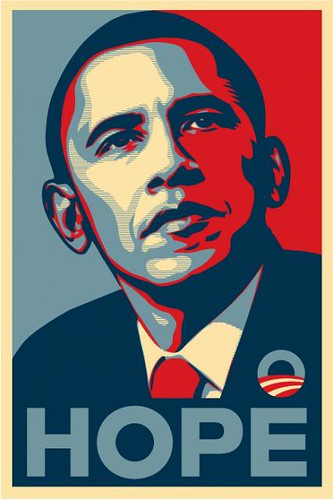Is Anything In Shepard Fairey's Image Actually Copyrightable By The AP?
from the searching...-searching...-searching... dept
With a lawsuit underway after the Associated Press accused artist Shepard Fairey of copyright infringement over his iconic Barack Obama poster (Fairey initiated the actual lawsuit, asking for a declaratory judgment that his image did not infringe, but that was after the AP publicly stated they were going to go after him for infringement), many are looking over the legal issues, and examining whether or not Fairey's use is fair use. In our initial post on the subject, it seemed pretty obvious that it was fair use, in large part because the AP didn't even realize it was an AP photo until someone else pointed it out -- suggesting that it was a transformative work, which represents a big part of the "test" for fair use.However, law professor Peter Friedman, has a very interesting look at some of the relevant case law, pointing out that courts have clearly said that the elements of a photograph that are copyrightable are only those elements created by the photographer. He quotes some recent court rulings that have found that the copyright only covers those specific things (e.g., "posing the subjects, lighting, angle, selection of film and camera, evoking the desired expression, and almost any other variant involved"), but elements beyond that are not covered by copyright. Friedman then points out that Fairey's image uses none of those supposedly copyrightable elements.


Basically, Fairey used Obama's pose -- which was not set up by the photographer, thus not covered -- and changed pretty much everything else about the image. So, he's wondering, what in the iconic image actually is covered by copyright?
Fairey's poster was not a copy of the photograph. It used one element, the angle of Obama's face, and changed everything else from the photograph. I doubt the choice of the angle was a creative choice on the part of the photographer. First, I would be surprised if the angle was not forced on him by the place the photographic pool was required to be, and, second, the angle is so generic that I can hardly imagine it represents the kind of creative decision that amounts to originality. If Fairey had simply painted a copy of the photograph, I'd agree that it was an infringement. But he didn't. He changed everything except the angle of the head. And surely the choice of subject matter for the photograph was not a creative one.
Filed Under: copyright, fair use, peter friedman, photos, shepard fairey
Companies: associated press

